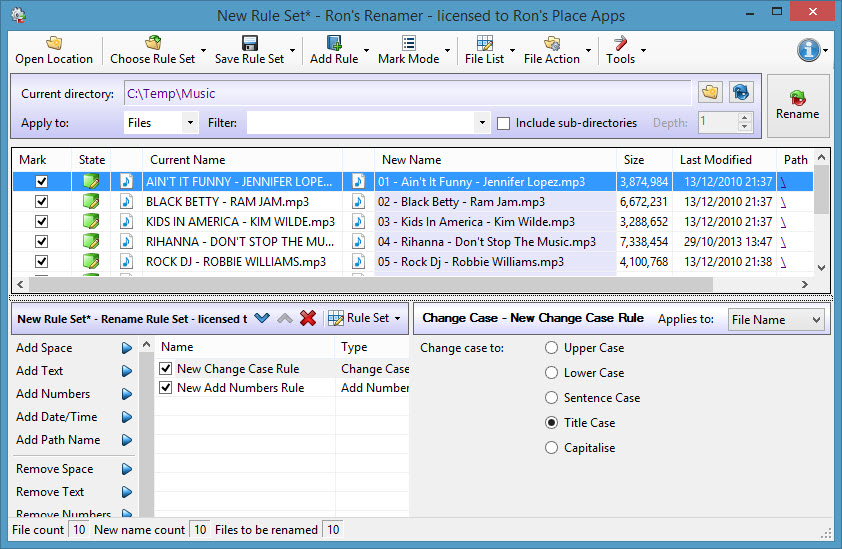
:max_bytes(150000):strip_icc()/Batch_Rename_Files_010-73529def6d344173906845c7ff132fc7.jpg)
- #Batch file rename with powershell how to#
- #Batch file rename with powershell code#
- #Batch file rename with powershell windows#
#Batch file rename with powershell windows#
> cd “D:\Hello World”) and then run the following Windows PowerShell command: You will get lots of article in internet, I’ve consolidated some commands in one article.ġ st open the Windows PowerShell and navigate to your desired folder/directory (e.g. If there is more than one number, we increase them all.In this article I’ll describe how easily you can rename files in a folder/directory using Microsoft Windows PowerShell. If the number is 1, it should change to 2, if it is 9, it should change to 10, and so on. This time around, we pretend to have a need to increment a number by one in a file name. To navigate to your folder of files, type cd (change directory) at the. Match evaluator replace actionComplexity currently going up a notch. You can just type powershell into the search box in Windows 10. Now you'll see all the files have been renamed, keeping the first 12 original characters of the. Launch the command prompt and navigate to the folder where your files are stored. PS C:\temp\dir> Get-ChildItem -Path *.txt | Format-Table -AutoSize Batch Rename Multiple Files With Command Prompt. In PowerShell v3 and up you have the -File and -Directory parameters for Get-ChildItem for filtering this. If you are using Get-ChildItem in PSv2, you can filter out only files using Where-Object and the boolean property "PSIsContainer". Remember that you can always add the flag "-Recursive" to Get-ChildItem to replace recursively. The Windows PowerShell rename command, Rename-Item, works to rename the filenames of operating system items such. They are the same (dir, ls and gci are aliases to Get-ChildItem). so.how can I rename the file using the info from datetime Im pretty new to powershell so any help is. I will be using Get-ChildItem and one of its aliases: "dir" (also "ls" and "gci"). get the info from datetime into the filename. Create a header for each column: Column 1 Path.
#Batch file rename with powershell code#
Some of the things will have to be done differently with PowerShell version 2 and earlier, but the Rename-Item and code in the -NewName parameter itself is compatible with v2. Using Microsoft Excel or similar, create a CSV files with two columns: Column 1 Current file name, including path. The code and examples in this article work with PowerShell version 3 and up (Windows Management Framework 3.0), unless otherwise stated.


#Batch file rename with powershell how to#
In this article I extensively demonstrate how to rename files in PowerShell, using custom criteria with if statements, regexes, splitting, string methods like ToUpper() for upper-casing and ToLower() for lower-casing, inserting stuff into specific places in a file name, and removing certain parts of a file name.Īs I wrote this article, I realized it's really as much about string manipulation as renaming files per se. You can found hier that allows you to quickly rename all the. Renaming files and using an if statement for conditions 1 is used only with the Powershell replace, its not a real Powershell variable. Very useful code but I use Batch Rename Files Tool because is easier to used.Match evaluator, custom date formats and date manipulation.Removing a character from a given position in a file name.Removing parts from, or adding parts to, a file name.Renaming files using PowerShell - Svendsen Tech Jump to page sections


 0 kommentar(er)
0 kommentar(er)
